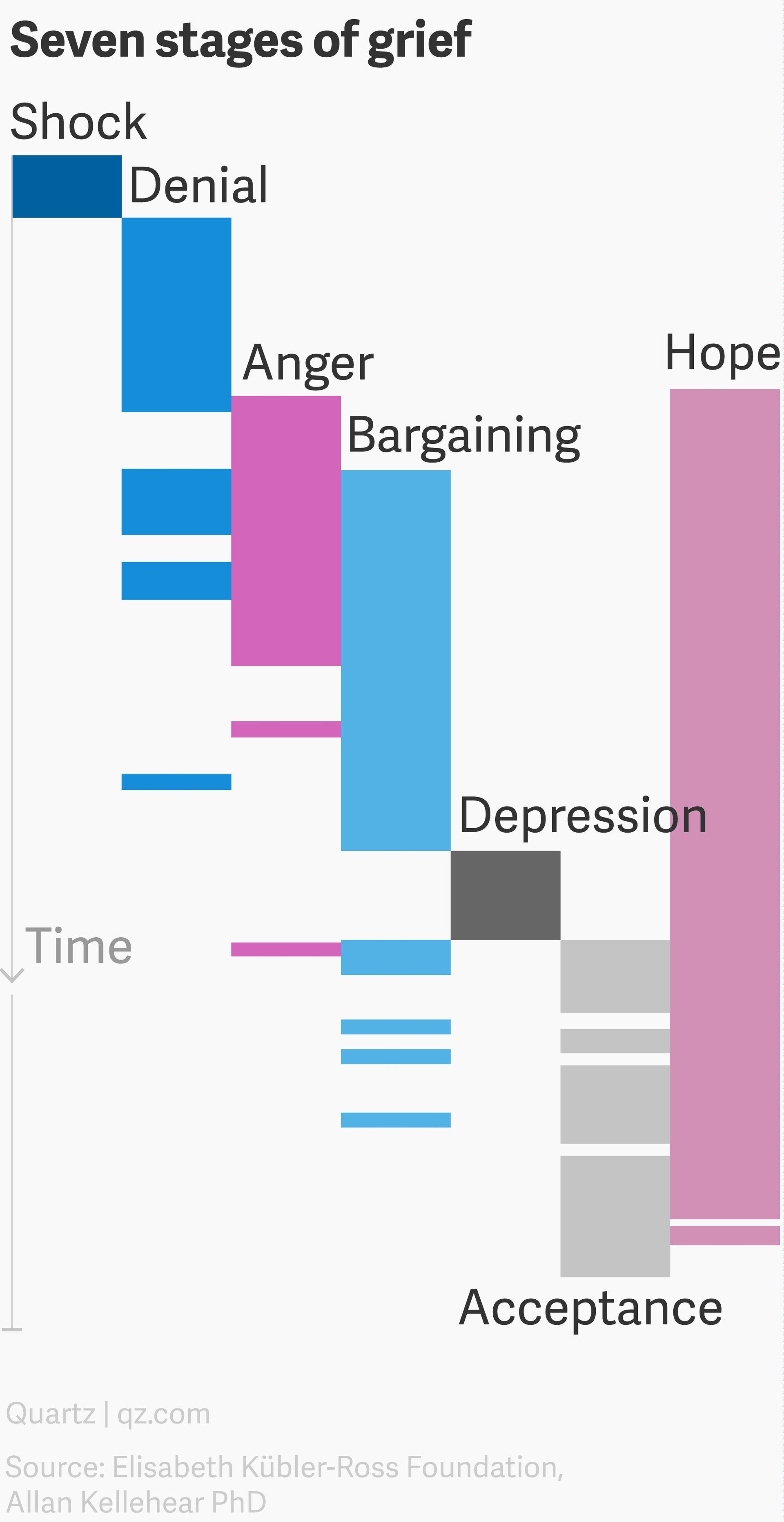Visualizing the stages of grief in one chart
In the aftermath of bad news, we struggle to make sense of what we’ve just learned.

In the aftermath of bad news, we struggle to make sense of what we’ve just learned.
Since the 1969 release of psychiatrist Elisabeth Kübler-Ross’s book on facing death, her five stages of grief have become a model for coping with loss. Kübler-Ross never intended for the stages to delineate a rigid sequence of human feeling—life is messy, and emotional journeys aren’t linear. Still, it’s helpful to know what to expect and to where we stand.
The chart below is based on a diagram in the foreword by Allan Kellehear, PhD – a scholar on dying and cultural influences – in the book’s 40th anniversary edition. It’s based on a chart by Kübler-Ross and expands on the stages: denial, anger, bargaining, depression, and acceptance. This chart has seven stages: It starts with shock and ends with hope.
Dianne Gray, the president of the Kübler-Ross Foundation said that a lot of people woke up to shock, but “what Elisabeth found in her research is that hope is embedded in every person.”

Those bookends will sound familiar to at least half of the American electorate, including Hillary Clinton, who used her concession speech on Wednesday to console supporters while also encouraging:
This loss hurts, but please never stop believing that fighting for what’s right is worth it.
I count my blessings every single day that I am an American and I still believe as deeply as I ever have that if we stand together and work together with respect for our differences, strengthen our convictions and love for this nation, our best days are still ahead of us.
Because, you know, I believe we are stronger together and we will go forward together. And you should never, ever regret fighting for that. You know, scripture tells us let us not go weary in doing good for in good season we shall reap. My friends, let us have faith in each other, let us not grow weary and lose heart for there are more seasons to come and there is more work to do.